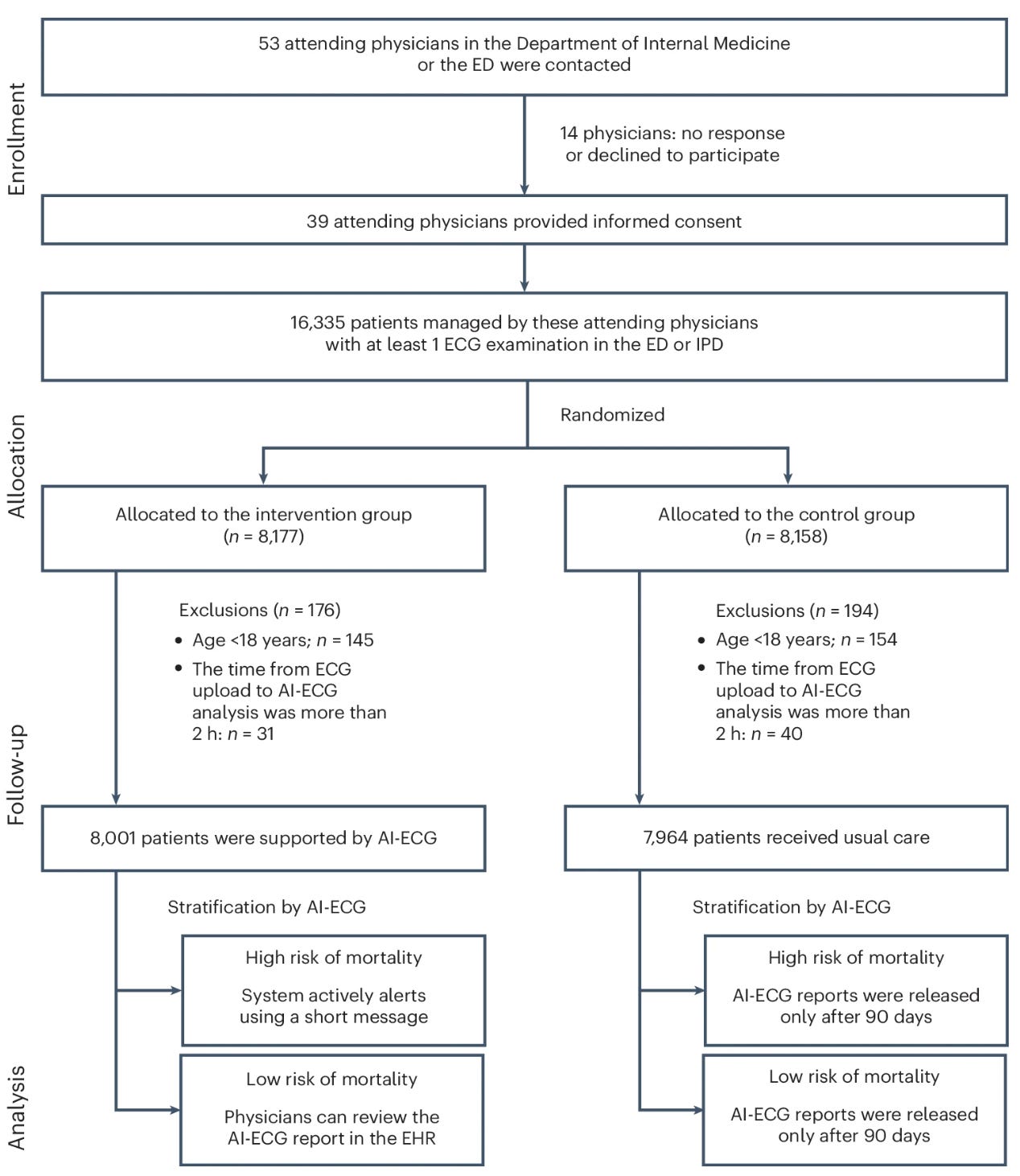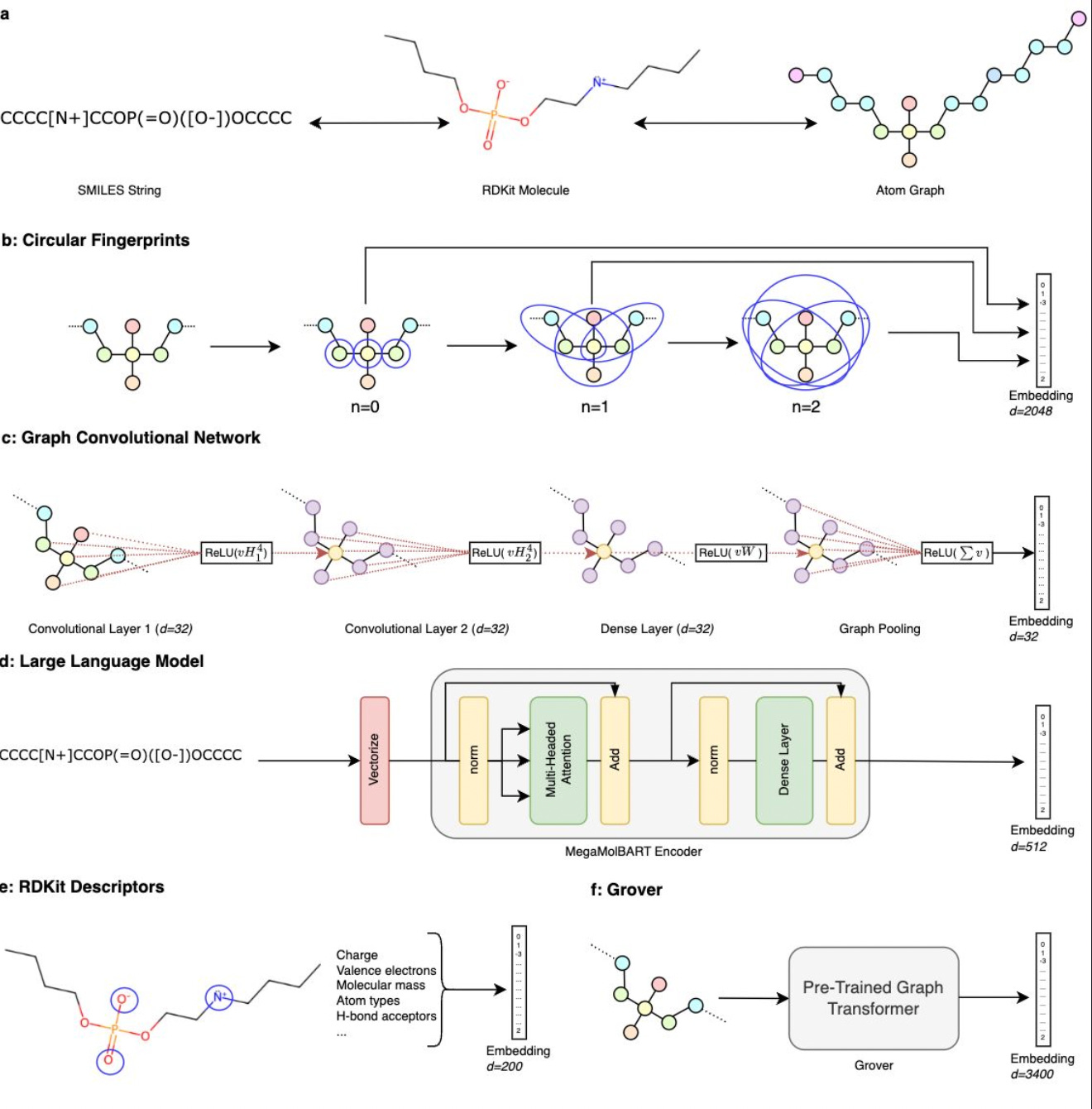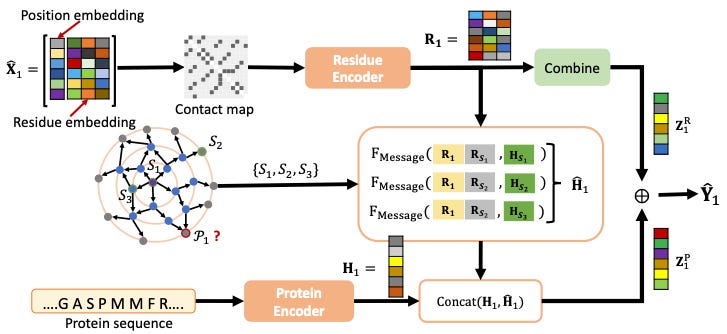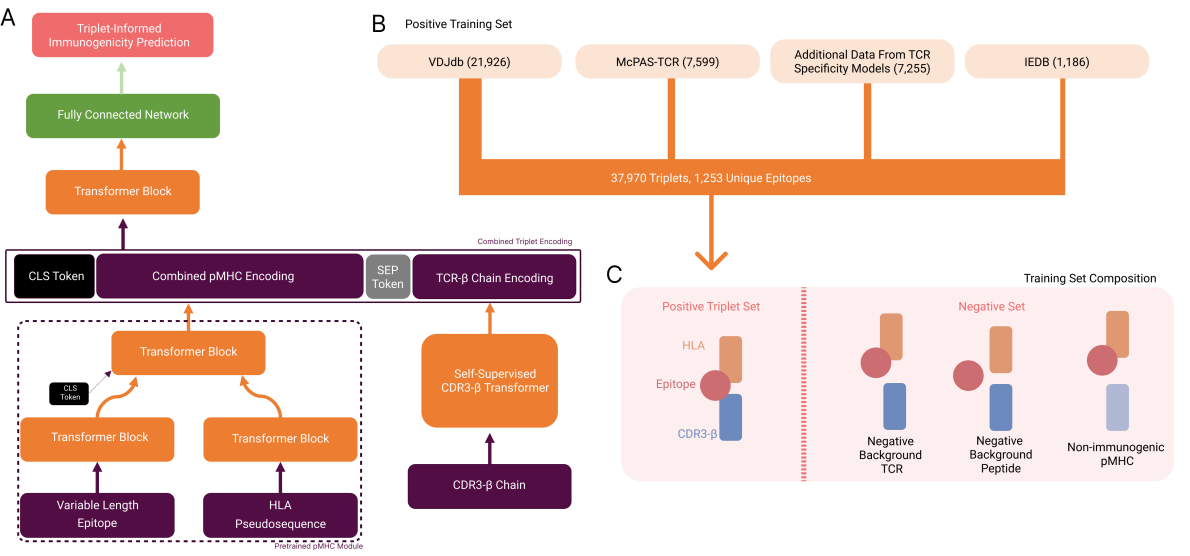# 4: Life Science x AI
Welcome back to your weekly dose of AI news for Life Science!
Here’s what we have for you this week:
AI applications for patients 👥
Pharma restructuring in May 🏭
Life Science tools of the week 🛠️
We are looking for an experienced CTO to join us … if you are interested or know anyone contact us on LinkedIn!
Don’t forget to take our short survey to help us understand how you currently use AI in your day-to-day!
AI applications for patients 👥
We keep on reading on AI applied for drug discovery (especially on protein design). But how is AI applied in hospitals to improve patient’s health outcomes?
Researchers from Taiwan hospitals investigated the ability of use AI-enabled electrocardiogram (ECG) to identify hospitalised patients with a high risk of mortality (multisite randomised controlled trial involving 39 physicians and 15,965 patients). The AI-ECG alert intervention included an AI report and warning messages delivered to the physicians, flagging patients predicted to be at high risk of mortality.
The outcome?
📌 AI-ECG alert reduced all-cause mortality by 0.7% within 90 days of the trial
📌 Most people that were saved belonged to the high-risk ECG group
📌 Patients in the intervention group with high-risk ECGs received increased levels of intensive care compared to the control group
Pharma restructuring in May 🏭
2024 is proving to be already a tough year for the biopharma industry, with many pharmas restructuring and cutting their workforce to reduce staff costs. Here a list of recent communication of layoffs already happened or happening this year:
📌 Takeda: 965 employees (2% of workforce)
📌 Evotec: 40 employees (1% of workforce)
📌 Lyra Therapeutics: 87 employees (75% of workforce)
📌 Exscientia: ~100 employees (20–25% of workforce)
📌 BioMarin Pharmaceutical: 170 employees (5% of workforce)
📌 Bolt Biotherapeutics: ~ 50 people (~50% of workforce)
📌 Tenaya Therapeutics: ~30 people (~22% of staff)
📌 Bayer: 1,500 jobs (1.5% of workforce)
📌 Ginkgo Bioworks: ~300 people (~25% of workforce)
📌 Marinus Pharmaceuticals: ~30 people (20% of workforce)
📌 Emergent BioSolutions: ~300 people (15% of workforce)
TOTAL: 3,872
Life Science tools of the week 🛠️
1/ LipoBART - Liquid nanoparticle design
RNA-based therapeutics hold a lot of promise due to their multiple mechanism of actions, allowing to correct gene expression levels or edit genes altogether. One of the key challenges is how to deliver the therapies. One typical vehicle for mRNA vaccines are lipid nanoparticles (LNPs). Designing LNPs is hard since many properties need to be optimised to improve delivery such as biodegradability, non-toxicity, synthetic accessibility, stability and transfection efficiency.
Sanofi released a new tool (LipoBART) which uses the lipid SMILES as inputs to accurately predict lipid properties, in order to achieve higher efficiency and reduced experimental time and costs. The paper with details os the method is available
2/ EvolMPNN- Protein prediction
Many AI tools have been developed to predict how protein behaves. The problem is that current tools do not take into account subtle protein mutations when designing proteins. That’s where EvolMPNN comes into play! This tool leverage protein evolution data to better understand how mutations affect a protein and related ones! Why is this important?
📌 It achieves 6.4% better than state-of-the-art tools to predict the effect of protein mutations
📌 It is 36x faster compared to large models since it requires less data
3/ Genesis - Protein design
Introducing Genesis, the latest tool from Achilles Therapeutics … yet again on protein design! As opposed to focusing on small molecules, the researchers prioritised neoantigen immunogenicity prediction, in particular for CD8+ reactive epitopes. Why? Because of limited training data and the overall low reactivity rates (2-6%) in called neoantigens. Genesis was trained over a variety of dataset, including 99,245 affinity measurements and ~16M positive and negative epitope binding
While Genesis outperformed existing models on pMHC immunogenicity prediction (7% increase in average precision), more development is needed as the precision is still suboptimal (AUROC = 0.619)
BITE-SIZED COOKIES FOR THE WEEK 🍪
Have you ever wondered the market size of AI in Drug Discovery? A recent report project a $7.1B market by 2030, growing at a CAGR of 23.72% . Note: the market was only $1.3B in 2022!
Sanofi established a partnership with OpenAI and Formation Bio to beef up its AI strategy. The first-of-its-kind partnership in the pharma and life sciences industries aims to leverage AI to accelerate drug development and bring new medicines to patients faster.
Menten AI has announced the completion of a successful research collaboration with Bristol Myers Squibb. By integrating machine learning, physics-based models, and quantum chemistry simulations, Menten AI's platform efficiently navigates chemical space, reducing the need for extensive wet lab testing.
Don’t forget to take our short survey to help us understand how you currently use AI in your day-to-day!






